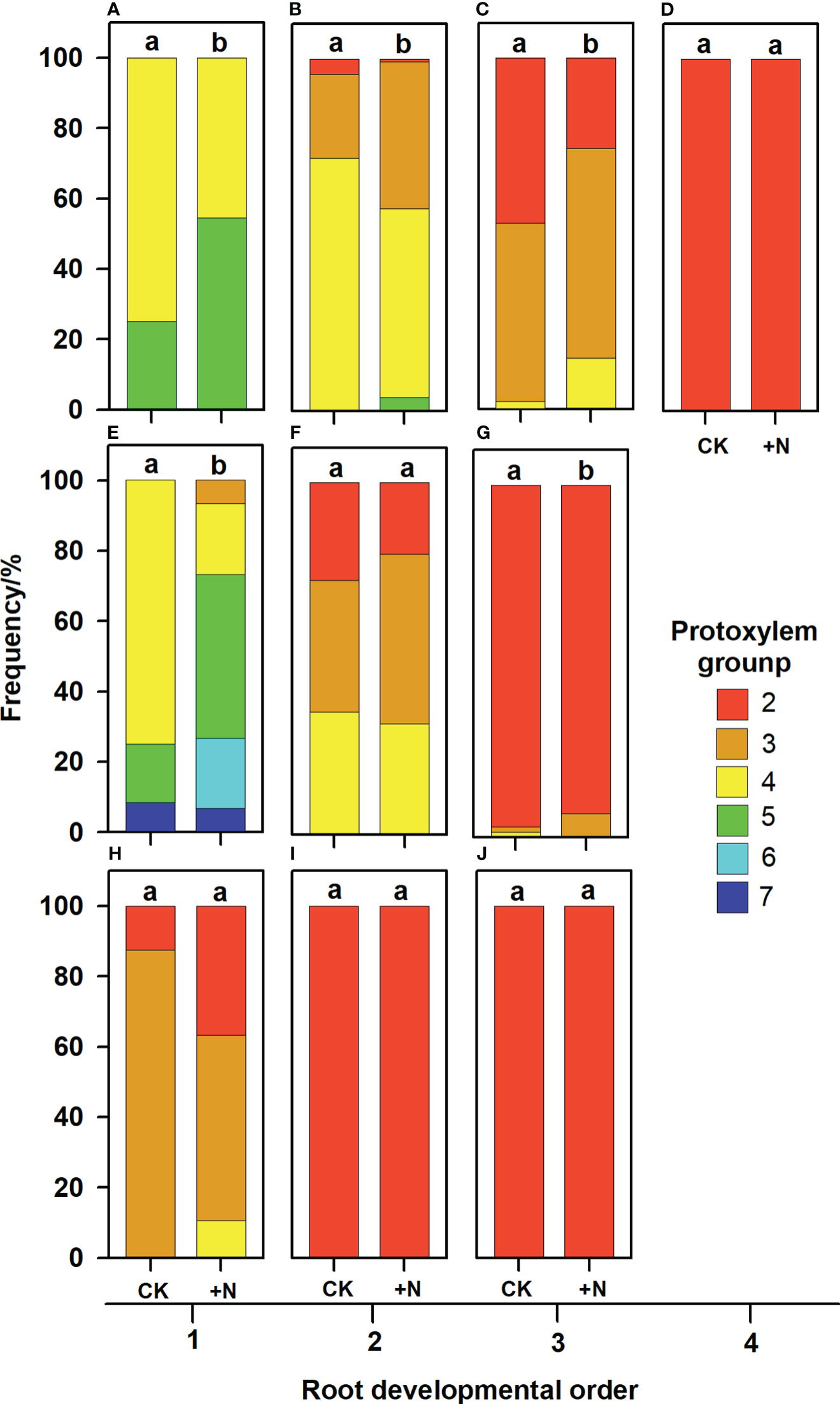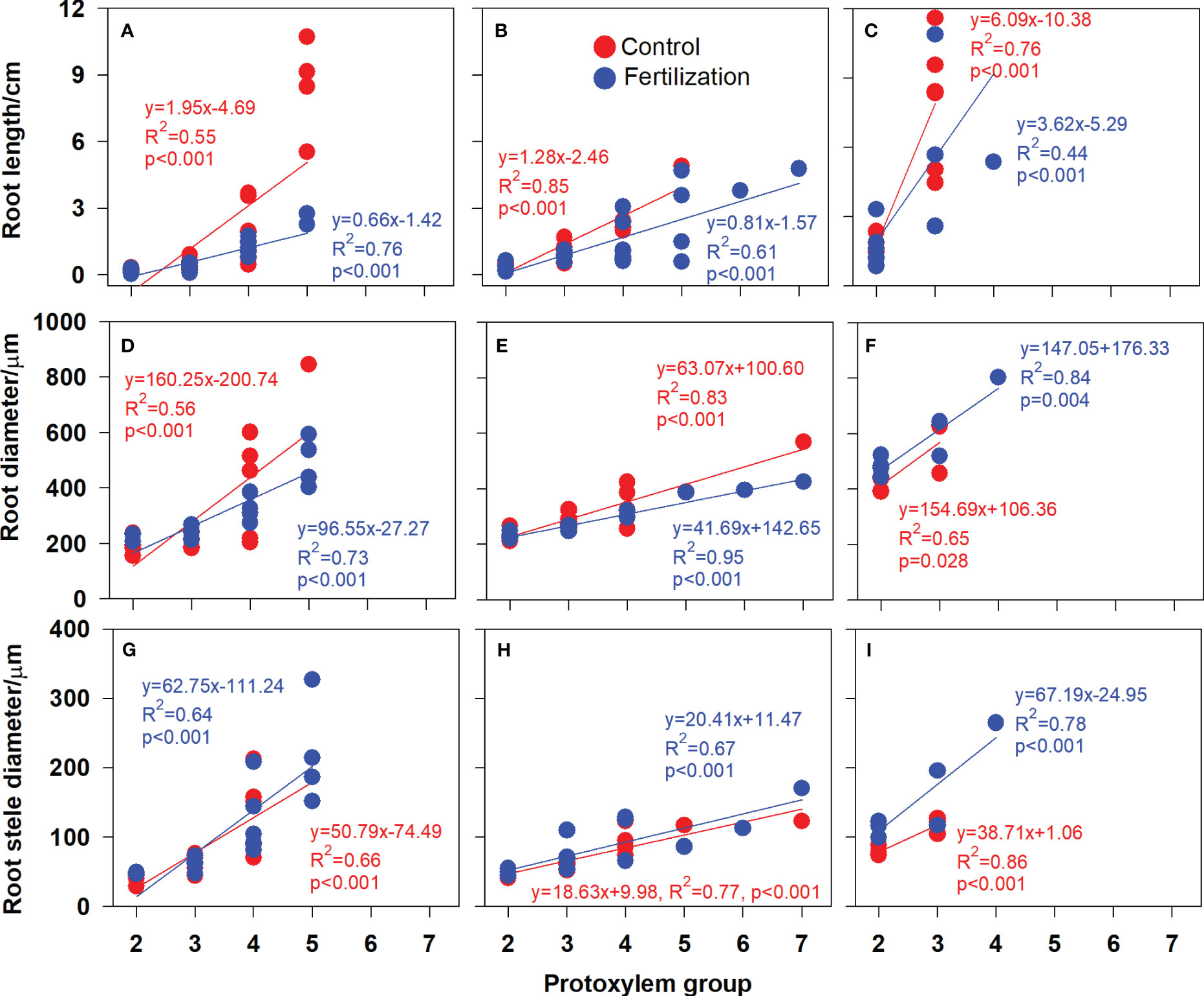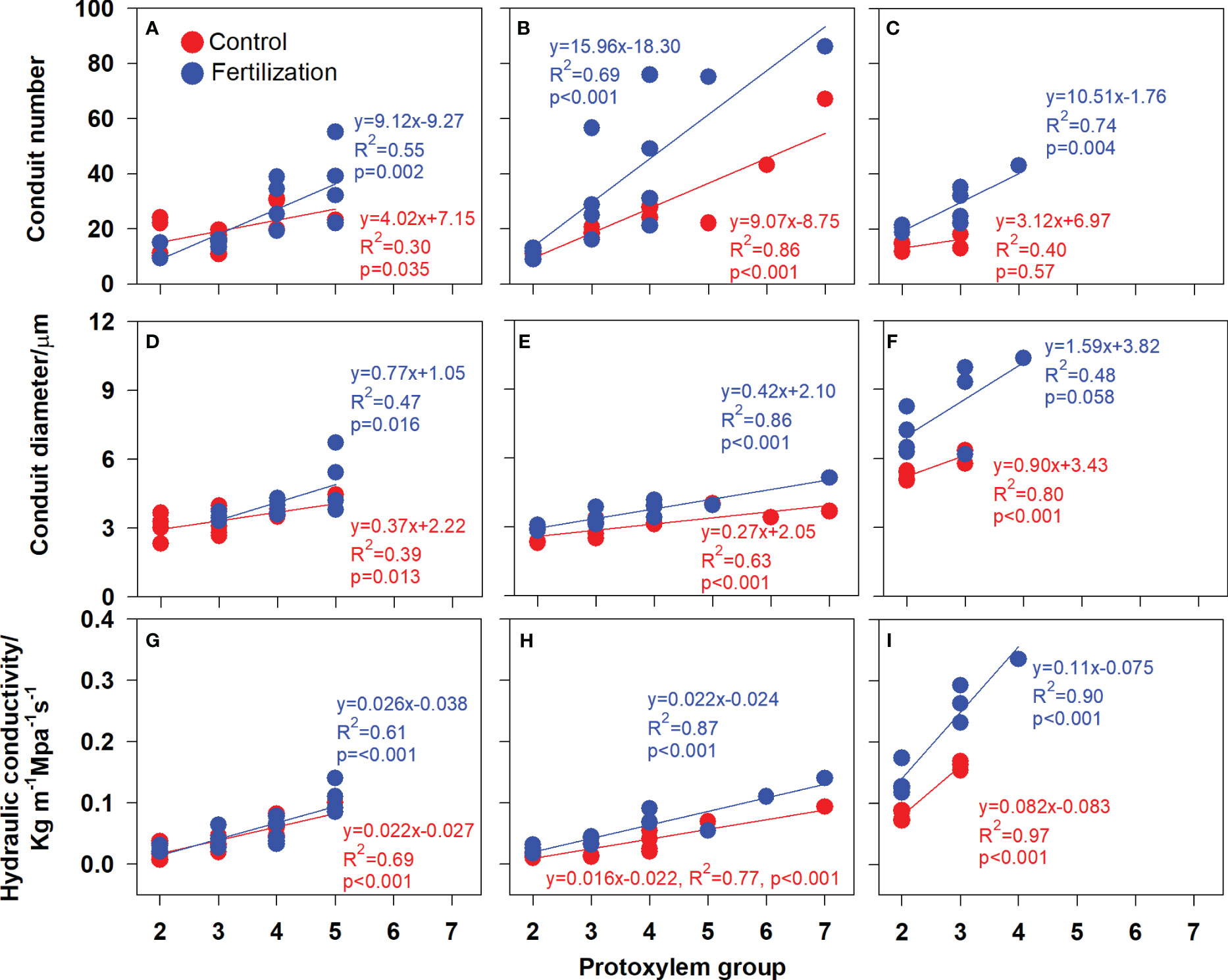
94% of researchers rate our articles as excellent or good
Learn more about the work of our research integrity team to safeguard the quality of each article we publish.
Find out more
CORRECTION article
Front. Plant Sci., 16 October 2023
Sec. Functional Plant Ecology
Volume 14 - 2023 | https://doi.org/10.3389/fpls.2023.1291059
This article is a correction to:
The Hierarchy of Protoxylem Groupings in Primary Root and Their Plasticity to Nitrogen Addition in Three Tree Species
A Corrigendum on
The hierarchy of protoxylem groupings in primary root and their plasticity to nitrogen addition in three tree species
by Li Z, Wang S, Wang W, Gu J and Wang Y (2022) Front. Plant Sci. 13:903318. doi: 10.3389/fpls.2022.903318
In the published article, there were errors in Figures 5, 6 and 7 as published. The word “proxylem” was misspelled. This should have been written as “protoxylem “. The corrected Figures 5, 6 and 7 and their captions “FIGURE 5. Protoxylem group composition in different root developmental order for Juglans mandshurica (A-D), Fraxinus mandshurica (E-G) and Phellodendron amurense (H-J) under control (CK) and fertilization (+N), respectively. Different lower-case letters indicate significant differences in composition between control and fertilization within each root developmental order according to chi-square test (P<0.05)”, “FIGURE 6. Relationship between the root protoxylem groups number and root length, root diameter and root stele diameter in Juglans mandshurica (A, D, G), Fraxinus mandshurica (B, E, H) and Phellodendron amurense (C, F, I), respectively” and “FIGURE 7. Relationship between the root protoxylem groups number and the number and diameter of root conduit, as well as hydraulic conductivity in Juglans mandshurica (A, D, G), Fraxinus mandshurica (B, E, H) and Phellodendron amurense (C, F, I), respectively” appear below.

Figure 5 Protoxylem group composition in different root developmental order for Juglans mandshurica (A-D), Fraxinus mandshurica (E-G) and Phellodendron amurense (H-J) under control (CK) and fertilization (+N), respectively. Different lower-case letters indicate significant differences in composition between control and fertilization within each root developmental order according to chi-square test (P<0.05).

Figure 6 Relationship between the root protoxylem groups number and root length, root diameter and root stele diameter in Juglans mandshurica (A, D, G), Fraxinus mandshurica (B, E, H) and Phellodendron amurense (C, F, I), respectively.

Figure 7 Relationship between the root protoxylem groups number and the number and diameter of root conduit, as well as hydraulic conductivity in Juglans mandshurica (A, D, G), Fraxinus mandshurica (B, E, H) and Phellodendron amurense (C, F, I), respectively.
The authors apologize for this error and state that this does not change the scientific conclusions of the article in any way. The original article has been updated.
All claims expressed in this article are solely those of the authors and do not necessarily represent those of their affiliated organizations, or those of the publisher, the editors and the reviewers. Any product that may be evaluated in this article, or claim that may be made by its manufacturer, is not guaranteed or endorsed by the publisher.
Keywords: hardwood species, fine root, root developmental order, protoxylem group, morphology, anatomy, fertilization
Citation: Li Z, Wang S, Wang W, Gu J and Wang Y (2023) Corrigendum: The hierarchy of protoxylem groupings in primary root and their plasticity to nitrogen addition in three tree species. Front. Plant Sci. 14:1291059. doi: 10.3389/fpls.2023.1291059
Received: 08 September 2023; Accepted: 05 October 2023;
Published: 16 October 2023.
Edited and Reviewed by:
Tino Colombi, Swedish University of Agricultural Sciences, SwedenCopyright © 2023 Li, Wang, Wang, Gu and Wang. This is an open-access article distributed under the terms of the Creative Commons Attribution License (CC BY). The use, distribution or reproduction in other forums is permitted, provided the original author(s) and the copyright owner(s) are credited and that the original publication in this journal is cited, in accordance with accepted academic practice. No use, distribution or reproduction is permitted which does not comply with these terms.
*Correspondence: Yan Wang, d2FuZ3lhbnNpbHZAc2RhdS5lZHUuY24=; d2FuZ3lhbl9uZWZ1QDEyNi5jb20=
Disclaimer: All claims expressed in this article are solely those of the authors and do not necessarily represent those of their affiliated organizations, or those of the publisher, the editors and the reviewers. Any product that may be evaluated in this article or claim that may be made by its manufacturer is not guaranteed or endorsed by the publisher.
Research integrity at Frontiers

Learn more about the work of our research integrity team to safeguard the quality of each article we publish.